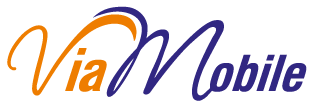Balance Sheet Template + Example
Similar to the current ratio and quick ratio, the debt-to-equity ratio measures your company’s relationship to debt. Investors, creditors, and internal management use the balance sheet to evaluate how the company is growing, financing its operations, and distributing to its owners. It will also show the if the company is funding its operations net of tax meaning with profits or debt.
Unlike the income statement, the balance sheet does not report activities over a period of staff accountant job description time. The balance sheet is essentially a picture a company’s recourses, debts, and ownership on a given day. This is why the balance sheet is sometimes considered less reliable or less telling of a company’s current financial performance than a profit and loss statement.
Ask Any Financial Question
According to the historical cost principle, all assets, with the exception of some intangible assets, are reported on the balance sheet at their purchase price. In other words, they are listed on the report for the same amount of money the company paid for them. This typically creates a discrepancy between what is listed on the report and the true fair market value of the resources.
- Current assets are typically those that a company expects to convert easily into cash within a year.
- The first is money, which is contributed to the business in the form of an investment in exchange for some degree of ownership (typically represented by shares).
- Also called the acid test ratio, the quick ratio describes how capable your business is of paying off all its short-term liabilities with cash and near-cash assets.
- They’re important to include, but they can’t immediately be converted into liquid capital.
- Assets are what the company owns, while liabilities are what the company owes.
Discover why over 90% of Fortune 100 companies trust Smartsheet to get work done.
The balance sheet only reports the financial position of a company at a specific point in time. Some financial ratios need data and information from the balance sheet. Business owners use these financial ratios to assess the profitability, solvency, liquidity, and turnover of a company and establish ways to improve the financial health of the company. Examples of activity ratios are inventory turnover ratio, total assets turnover ratio, fixed assets turnover ratio, and accounts receivables turnover ratio. Now that the balance sheet is prepared and the beginning and ending cash balances are calculated, the statement of cash flows can be prepared. Our easy online enrollment form is free, and no special documentation is required.
Report Format Balance Sheet
Ensure that you meet your financial obligations and solvency goals with this easy-to-use monthly balance sheet template. Enter your assets — including cash, value of inventory, and short-term and long-term investments — as well as liabilities and owner’s equity. Completing the form will provide you with an accurate picture of your finances.
The balance sheet of Apple (AAPL), a global consumer electronics and software company, for the fiscal year ending 2021 is shown below. The second source of funding—other than liabilities—is shareholders equity (or “stockholders equity”), which consists of the following line items. The next section consists of non-current assets, which are described in the table below. After you’ve identified your reporting date and period, you’ll need to tally your assets as of that date.
Using the screenshot from earlier, we’ll enter Apple’s historical balance sheet into Excel. Below are examples of the Shelley-Anne’s balance sheet using the different balance sheet layouts explained above. She was able to open anaccount with the supplier, so she did not have to pay for it rightaway, but it did have to be paid for by the end of the followingmonth.
For Where’s the Beef, let’s say you invested $2,500 to launch the business last year, and another $2,500 this year. You’ve also taken $9,000 out of the business to pay yourself and you’ve left some profit in the bank. There are a few common components that investors are likely to come across.
